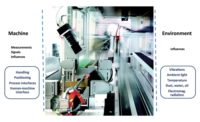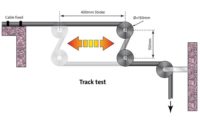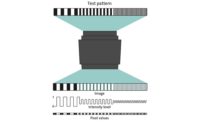Since the emergence of CameraLink, the first dedicated data transmission standard for machine vision applications, the industry has made major moves to develop new standards to meet the rapidly developing technological advances in camera technology and an ever-expanding range of applications for vision. Efforts have been directed both on developing standards specific to the vision industry as well as utilizing those available in the consumer industry, such as USB.
BASIC CONSIDERATIONS
The requirements of the vision application itself determine the parameters of the machine vision camera interface and the following factors should be considered:
- Speed of the interface
- Cable length needed
- Cost
- Importance of data integrity
- Plug and play setup
- Ability of the PC to accommodate an additional frame grabber card
- Ability to network the cameras
- Number of network interfaces available on the PC
In an ideal world, a machine vision interface should standardize on connectors and cables that are suitable for the industry as well as standardizing camera control and integration with a range of software. In addition, it should be manufacturer independent and offer the ability to migrate between interfaces.
THE STANDARDS REVOLUTION
Before 1995 there were no standards and only two interfaces: LVDS and analogue. Between 1995 and 2005, however, the first dedicated standard, CameraLink, was developed, mainly to simplify cabling, and extensive use was also made of two consumer interfaces: IEEE1394 (FireWire) and USB 2.0 for lower end applications. 2005 marked the beginnings of the standards revolution with the development of the GigE Vision standard, utilizing Ethernet connectivity, and this in turn drove the development of the umbrella standard, Gen<i>Cam. Gen<i>Cam delivers a consistent programming interface (API) for all compliant cameras and provides three main functions:
- A method of configuring the camera
- Information on what features the camera has with standard naming
- An optional method for interfacing to the data transmission interface
Each Gen<i>Cam compliant camera contains an XML file containing all the relevant camera information such as the resolution, camera control, exposure modes and special features. Gen<i>Cam itself is split into three modules. The GenAPI is the XML file covering the camera’s features and the Standard Feature Naming Convention (SFNC) provides recommended names and types for common camera features. GenTL is the Transport Layer Interface to move the data from the camera to the application. While Geni<i>Cam was originally developed in conjunction with GigE Vision, the arrival of GenTL allows interfacing with other standards independent from the underlying transport technology. The continued evolution of cameras with better and better spatial resolution and high speed cameras with high frame rates in line with Moore’s Law meant that by 2010, the CameraLink and GigE Vision standards were beginning to run out of headroom with regards to data transmission rates. Gen<i>Cam and the GenTL interface have provided the platform for a whole new set of standards. Each of the new standards has its own particular characteristics: physical (cables, connectors), control (of camera features) and communication (data protocols, error correction, software interface).
THE NEW STANDARDS
Before looking at the new standards in more detail, it is necessary to define the term ‘standard on the wire.’ Standard on the wire means that no camera manufacturer-specific software is required for set up. The firmware of the camera is already integrated in the camera and is not uploaded by the host. This allows true plug and play between manufacturers and by using Gen<i>Cam, camera control and naming is standard. For cameras that do not utilize standard on the wire, additional manufacturer software is required specific to the camera. The software needed can be either proprietary or standards-based.
Proprietary software requires a manufacturer’s Software Development Kit (SDK) or a standards based camera would require a manufacturer-specific driver as a minimum. If developers choose to use the camera manufacturer’s proprietary SDK the advantage of standards is often lost as they become tied to that manufacturer, but this approach also has the advantage that a new interface can be adopted quickly without waiting for the standard to mature. However, there is no commonality of names for features or flexibility between manufacturers. For standards-based situations, using the Gen<i>Cam standard means that any interface with a Gen TL driver will work and, of course, camera control and naming follows the SFNC. Using an independent SDK rather than the manufacturer’s SDK that supports Gen<i>Cam will allow users to take advantage of a wider range of interfaces and manufacturers. The new interfaces fall into three categories: direct (CoaXPress and CameraLink HS), consumer (USB 3.0) and network (GigE Vision and 10 GigE Vision).
NEW DIRECT INTERFACES
CoaXPress and CameraLink HS are both hot pluggable interfaces that can send high speed video, communication, control and power over the connecting cable. CoaXPress utilises coaxial cable and works over relatively long cable lengths, depending on the precise cable type, with a high speed downlink of up to 600 Mb/s per cable for video data over up to 40 meters and more than 100 meters at 300 Mb/s. For communication from host to device, there is a 20 Mb/s “uplink” that allows for control and configuration data. For even higher speeds, links may be aggregated to provide multiples of the single coax bandwidth typically to 2,400 Mb/s (4 cable). Power is provided over the cable at up to 13 Watts per cable and through-cable triggering has 6us latency and 10 ns jitter. CameraLink HS, on the other hand, offers bandwidth between 300Mb/s and 2,000 Mb/s utilizing copper cable or up to 1,200 Mb/s over 300+ meter distances using fiber-based cables. Through-cable triggering has 300 ns latency and 3 ns jitter, making it ideal for line scan applications. CameraLink HS also offers data forwarding and hardware error detection and resend. Both CoaXPress and CameraLink HS embrace Gen<i>Cam and both require dedicated frame grabbers. CoaXPress requires the provider to supply a Gen TL, while CameraLink HS has an optional GenTL provision.
USB 3.0 CONSUMER INTERFACE
It is important to differentiate between the USB 3.0 standard used on the mass market and the corresponding Machine Vision Standard USB3 Vision. Finalization of the first version of this standard is expected in time for the Vision Show in Stuttgart, Germany in November 2012. USB3 Vision is a standard on the wire, which is fully Gen<i>Cam compliant and provides power, control and data over a single cable with a lockable connector. Data transmission of up to 400 Mb/s is possible over distances of more than 5 meters and keeps the PC’s Ethernet port free. The limitation, like GigE Vision, is it has no through the interface triggering.
10GIGE VISION
NETWORK INTERFACE
The long-awaited upscaling of the GigE Vision standard to a 10G Base-T version, 10GigE Vision, is predicted to be finalized between 2013 and 2015. Now that new chipsets have been developed that have reduced power requirements with associated reduction in heat generation, this option is becoming viable. The new 10GigE Vision is a scaling of the GigE Vision standard which provides data transmission of 100 Mb/s over 100 meter cable lengths, and with link aggregation up to 200 Mb/s over the same distances. In addition, 10GigE Vision is expected to offer 1,000 Mb/s over distances of around 30 meters. Like GigE Vision, 10GigE Vision will be a fully Gen<i>Cam compliant standard on the wire that will require no software development. Power, control and data are all carried over the Ethernet cable. Like the original GigE Vision, the new interface is networkable, but as packets can arrive in any order, network re-ordering causes a slightly higher central processing unit (CPU) load than the other standards. GigE Vision also now utilizes IEEE 1588 Precision Time Protocol (PTP) to provide synchronization accuracy in the sub-microsecond range between a network of cameras without additional synchronization or trigger cables, which is a unique feature.
WHAT IT ALL MEANS
A summary of the key performance characteristics of all the standards discussed here is given in the table, and the relationship between maximum allowable cable length and data transmission speed for the new standards is shown graphically in Figure 3.
*After interface is installed and software is installed
DATA TRANSMISSION STANDARDS
It is clear that there is no single standard that fits every application, but system developers now have a much wider choice than ever before. Gen<i>Cam and Gen TL are likely to be the bedrock for any further new standards, and cost advantages of consumer and networking interfaces are likely to push direct interfaces to use at the highest levels of performance. One word of caution, though. Standards take time to settle, so some care should be taken if adopting a new standard early on.
Tech Tips
|






